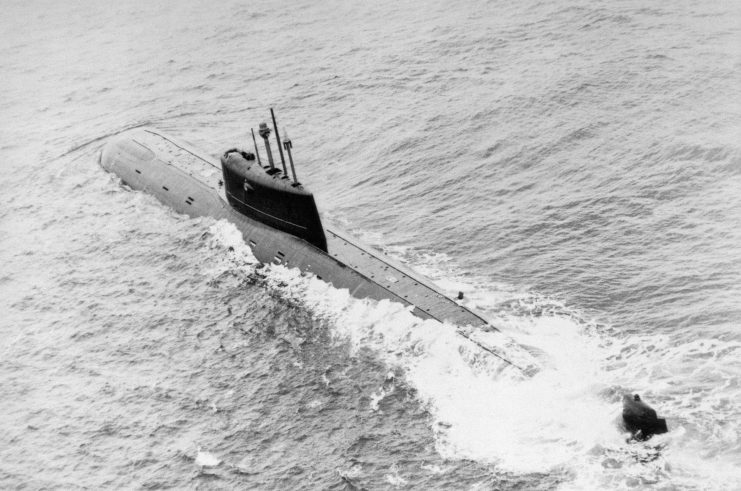It’s the plot of many a science fiction movie or dystopian novel – radiation seeps out from one source or another; thousands get sick or die, and the government pretends nothing is wrong and that the leak isn’t alarming.
That’s what happened at Chernobyl. That’s what happened at Three Mile Island in America in 1979.
Once again, Russia is the source of the problem, as one of its subs sits rotting at the bottom of the Norwegian Sea leaking radiation, after a disaster 30 years ago, during which 42 sailors lost their lives.
Those men were killed by the cold water, or by inhaling poisoned fumes while still stranded. However, 27 sailors did survive, and were rescued by two Russian ships. The sub’s commander had managed to surface briefly and call for help, so authorities were quickly notified of the disaster.

The Komsomolets sank in 1989 when a fire broke out on board. Now, scientists from Norway’s Institute of Marine Research have examined and filmed the wreck say it is leaking radiation at a level 800,000 times what is considered normal, or to some, acceptable.
The crew took samples from surrounding waters and one of the sub’s pipes to get a better idea of just how dangerous the leak might be.
The lead scientist on the project told bbc.com in mid-July that the levels are “not alarming,” but the sub was equipped with nuclear torpedoes, both with plutonium warheads. It could also fire Granit cruise missiles.
The sub, also known as K-278, lies in very deep water, more than 5,000 feet down, and any leaking radiation is immediately rendered, if not completely harmless, certainly less dangerous because the cold Arctic water dilutes it. Furthermore, because very few fish can survive at that depth or temperature, there is no threat to marine life, scientists say.
Slik ser den sovjetiske atomubåten “Komsomolets” ut i dag – 30 år etter at den sank i Norskehavet. Forskerne fikk de første bildene av vraket sent søndag kveld. pic.twitter.com/4QBMB3svPv
— Direktoratet for strålevern og atomsikkerhet (@Straalevernet) July 8, 2019
To get samples from the sub, the research team from Norway sent down a remotely-operated vehicle (ROV) to examine and film the wreck, in order to study it thoroughly in their lab. The team confirmed that the boat was very badly damaged during the fire.
However, Norway’s Radiation and Nuclear Safety Authority (DSA) explained to bbc.com that as soon as the fire began, the pressure water reactor that propelled the sub ceased operating, lessening the danger even further.
This is not the first time the K-278 wreck has been monitored; in fact, on occasion Russia and Norway have teamed up to check whether the wreck is causing more damage. This time, Russian scientists from the Typhoon Research and Production Association accompanied Norwegian radiation experts and marine scientists.
The mission’s leader, Hilde Elise Heloal, explained to bbc.com, “We took water samples from inside this particular duct because the Russians had documented leaks here both in the 1990s and more recently in 2007. So we weren’t surprised to find high levels here.”
However, she insisted, the radiation is not a threat to anyone, not even marine life. “The levels we detected were clearly above what is normal in the oceans, but they weren’t alarmingly high.”
The question now becomes: what level is too high? What can the ocean withstand before the radiation begins to damage marine life, then cause damage further up the food chain? Sooner or later these disasters do manifest themselves somehow in the human sphere; the only question is when, and how.
Can the wreck be retrieved, perhaps, before it rots completely and the radiation becomes a serious threat? And what will happen to those torpedoes?
Perhaps only scientists can answer these and other pressing questions about the dangers of nuclear materials. But of course, governments must then have the political will to enact whatever solutions science offers. That takes money, but also the willingness to admit their mistakes. And that is something no government is very good at, regardless of its philosophical leanings.
Another Article From Us Third Reich’s Abandoned “Highway” For Stolen Gold
